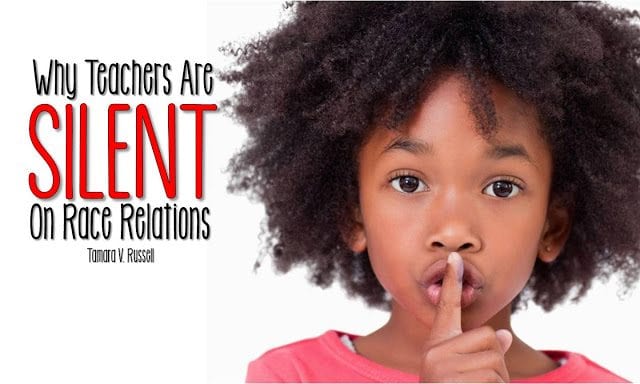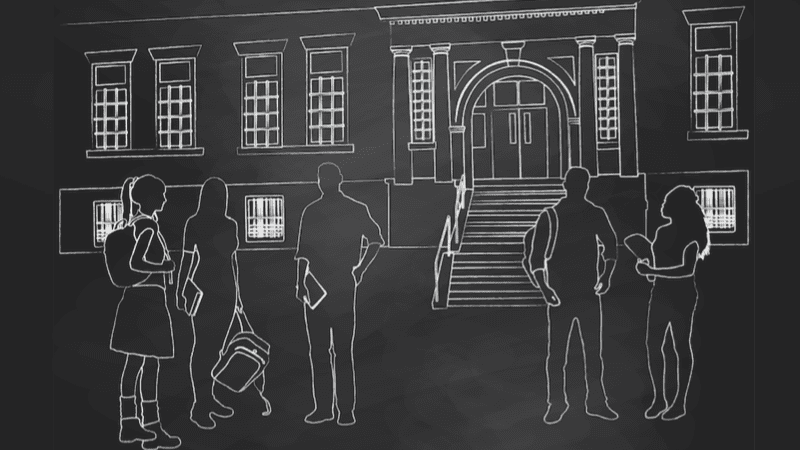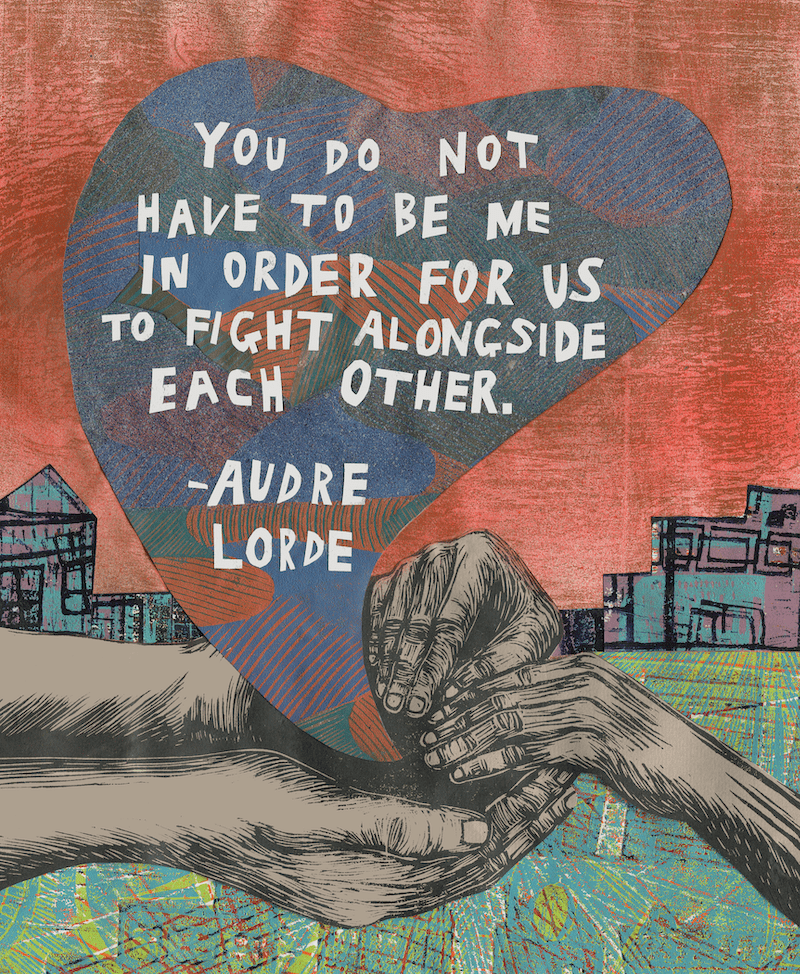The pain of racism is devastating our country and you’ve likely seen the impact in your own community. You may have even seen it in your classroom. Now, we see demonstrations taking place with people taking to the streets to stand against prejudice and injustice. Our stomachs churn. Our hearts break. And our minds wonder. What can we do to make this a better world for everyone? Here are 10 ways teachers can fight racism and teach tolerance right now.
1. Get (and Stay) Informed
Sometimes, we think we know more than we actually do. When it comes to racism, you cannot neglect the importance of being informed. Reading books and watching movies is just the beginning of the journey. It’s absolutely essential that we learn about how our own implicit biases (and where they came from) can impact how we think and behave.
Racism is such a deeply ingrained part of our society that we may not even recognize it. For example, many schools have dress codes that contain exclusionary policies, particularly when it comes to hairstyles. We’ve seen African-American students denied the right to graduate or participate in sports unless they were willing to cut their dreadlocks. A daycare shaved a biracial child’s hair without her parent’s permission “for reasons of cleanliness.”
This lack of understanding of natural hairstyles within the black community is just one example of the many causes of trauma to children. Families are all too often punished for refusing to conform and educators need to make every effort to stop this destructive pattern from continuing. The Teaching Tolerance website offers professional development through workshops, self-directed learning, webinars, podcasts, and even facilitator guides to empower you with the knowledge you need to take on this highly important endeavor.
[contextly_auto_sidebar]
2. Speak Up
One of the most painful things we can experience is people being silent around us while we are suffering. No matter the circumstance, it’s never okay to look the other way when we see others being mistreated and/or abused. We must always confront and address racism in all forms every single time.
Once you become more aware of the injustices your students, their families, and your co-workers of color face every day, you absolutely must speak up whenever you witness racism in action. Discriminatory policies in your school must be confronted head-on.
This may mean having difficult conversations with administrators or staging a walk-out. Not sure where to begin? This guide for “Responding to Hate and Bias in School” is designed for administrators, counselors, and teachers. It can be a valuable resource as you take those first steps.
When we’re forced to stand alone for what’s right, it can feel like the weight of the world is on our shoulders. But when we can look around and see others joining together in acts of solidarity, we make it clear that we, as a society, will not tolerate racism and discrimination. We can’t stand on the sidelines and watch this toxic dynamic continue. We all need to say something!
3. Give Your Classroom a “Diversity Audit”
It’s natural to gravitate to familiar concepts, which is why it’s so important that we push ourselves to look through multiple lenses when we’re preparing our classrooms. More than ever, our students deserve to feel included, loved, and celebrated for who they are. They need to know that we recognize and support them.
Read “The Benefits of Inclusion and Diversity in the Classroom” and then take a look around. Are you using the space on your walls to create an inclusive environment? Do your students see themselves? How you equip your classroom is one of your greatest opportunities to set the tone. You need to be consciously creating a space where kids from all backgrounds feel safe and cherished.
Choose wall decor, such as these beautiful One World posters, to promote inclusivity and spark a conversation. Introduce books that teach diversity to elementary school kids and explore the many ways in which you can help prepare your students for citizenship.
4. Commit to Listening
One of the ways teachers can foster cultural awareness in their classroom is to express interest in the ethnic backgrounds of students. In the article, Matthew Lynch writes, “Analyze and celebrate differences in traditions, beliefs, and social behaviors. It is of note that this task helps European-American students realize that their beliefs and traditions constitute a culture as well, which is a necessary breakthrough in the development of a truly culturally responsive classroom.”
Additionally, recognize that active listening involves more than simply hearing your students, especially during difficult moments. Listening to truly understand is crucial and will impact how you respond when students report acts of bullying or racism in the community, the school, and your classroom.
The classroom culture you create should focus on giving every student a voice while honoring student experience and providing social and emotional safety. Fostering student-led discussions and consciously working to better communicate with culturally diverse students will help everyone feel seen and heard.
5. Bring Empathy Into Your Classroom
Teaching with empathy is incredibly important, especially if you are trying to teach tolerance in the classroom. According to Merriam-Webster, empathy is “the action of understanding, being aware of, being sensitive to, and vicariously experiencing the feelings, thoughts, and experience of another… without having the feelings, thoughts, and experience fully communicated in an objectively explicit manner.”
Ready to begin? The Harvard Graduate School of Education has published a guide called “How to Build Empathy and Strengthen Your School Community.” Once you’ve read that, check out the Empatico website. This free tool combines live videos with activities designed for elementary students. Empatico connects classrooms around the world, empowering teachers and students “to explore the world through experiences that spark curiosity, kindness, and empathy.”
You don’t have to experience racism, marginalization, or discrimination to be sensitive to its prevalence in our society and how it has seeped into every level of our lives. To show empathy is to show love, and as Dr. Martin Luther King, Jr. wrote, “Love is the greatest force in the universe. It is the heartbeat of the moral cosmos.”
6. Enhance Your Curriculum
While we touched on this a moment ago, this topic really deserves attention. Be conscious and aware of the fact that learning materials, assessment tools, and historical accounts can be biased. A good place to begin is by reading this piece, “The Racist Beginnings of Standardized Testing” on the National Education Association’s website.
As such, one of the most important ways to fight racism and teach tolerance in our classrooms is to rethink and enhance the curriculum. We should always look for ways to give our students the fairest and most balanced experience possible. Especially during these formative years in their lives.
Need some inspiration? This guide offers 8 Ways to Teachers Can Address White Supremacy in the Classroom. If that seems heavy, remember that your students of color and their families are likely dealing with this in their real lives every day. The Teaching Tolerance website also provides classroom resources including Teaching Strategies, Lessons, Learning Plans, Student Texts, Student Tasks, and even Film Kits to help you feel better prepared to emerge as a leader against racial injustice.
7. Set High Expectations (And Lead By Example)
Once you’ve laid the foundation for your diverse classroom, make it clear that you have high expectations for your students, parents, and school. Managing intolerance, discrimination, and outright racism in your classroom might require a lot of effort. But just imagine how exhausting it is to be a person of color.
Challenge any policies, punishments, or practices that take away from the mission of creating an inclusive environment. For example, as the Teaching Tolerance website explains, “Zero-tolerance policies are popular, but mounting evidence suggests that this approach does not make schools safer. An alternative is taking a ‘zero-indifference’ approach to bullying, harassment, and other disciplinary issues. Zero indifference means never letting disrespectful conduct go unaddressed; school staff always name and respond to behaviors, but they do not implement automatic suspension, expulsion or other punishments.”
Additionally, we can consider the “restorative justice approach to school discipline (and criminal justice) by focusing on repairing harm and restoring relationships rather than simply punishing those who have engaged in misconduct. Restorative justice spans a wide variety of practices and strategies, including peacemaking circles, peer jury processes, mediation, conferencing and classroom discussions focused on building empathy.”
Of course, you must absolutely lead by example. Among the critical practices for teaching leadership is to bring both cultural understanding and self-awareness to your work. You must actively challenge your own stereotypes and examine how you’ve responded to oppression in the past. Every day, make the conscious decision to show your students what it means to stand for what is right within the classroom and beyond.
8. Learn From Other Teachers

SOURCE: Mrs. Russell’s Room
If you’ve been in the classroom for any length of time, you already know your fellow teachers are a wealth of information. Undoubtedly, you’ve sought to find the best tips for workbooks and room decor. Why not do the same for diversity issues?
There are many incredible teachers of color out there creating content for this very reason. Whether it’s tackling a difficult situation in the classroom or learning to recognize oppressive policies on an administrative level, there are blogs, Instagram accounts, and YouTube channels where these incredible educators are sharing their experience.
Grab a cup of coffee and sit down to read Tamara Russell’s “Why Teachers Are Silent on Race Relations” and “The Lie I Refuse to Teach.” Open your heart as Jose Vilson reflects on segregation and why we don’t see more teachers of color. If you see a way to sign up for newsletters, do it. It’s an excellent way to stay engaged.
Finally, find ways to work with other teachers within your school. Regularly set aside time to critically and constructively review curricular materials. Visit each other’s classrooms. And, share assignment ideas to ensure that you’re all working towards the same goal.
9. Get Involved
When we’re disconnected from something, it’s much easier to dismiss it. You might scroll right by a story that has no impact on your life while it tears up people of color in your community. That’s one of the reasons why racism continues to be so pervasive. Some people don’t even recognize it. Do not miss opportunities to get involved.
- Start a diversity committee at your school.
- Examine and analyze school policies that may harm or marginalize your students.
- Request ongoing sensitivity training for administrators and teachers.
- Demand action from your local representatives.
- Add your name to an online petition such as #WeCantBreathe.
- Support justice reform through organizations such as Campaign Zero, National Police Accountability Project, Prison Policy Initiative, and The Sentencing Project.
- Support black-owned businesses.
Pay attention to what elected officials are saying and cast a vote for equality. Stand up and be an ally if you witness racism, discrimination, or brutality happening in your community. Feel motivated enough to protest? Lace up your shoes! Even if you don’t (or can’t) take to the streets, you can organize walk-outs and online petitions or contact an organization such as the American Civil Liberties Union (ACLU) for ways you can make a difference.
10. Donate
Year after year, protests erupt across this country as human beings fight for their constitutional right to live. That shouldn’t be necessary in 2020. We know that teachers are incredibly underpaid, which is why a donation is such a meaningful gesture.
Thousands of people have been arrested fighting injustice. An immediate and impactful way to show your support is to donate to bail funds for protestors. Even if you can’t give much, The Bail Project explains how far each donation goes: the bail is set, the bail is paid, and the bail returns at the end of the client’s case. Then, that money can be used again and again to help others.
Of course, you should always verify that you’re donating to a legitimate source. But providing monetary support to a victim’s family or organizations that provide legal services can go a long way towards confronting the devastation of systemic racism.
For more ways for teachers to fight racism and teach tolerance in your classroom, read our articles “White Teachers Need to See Color. Here’s Why” and “6 Ways to Advocate for Underrepresented Students Headed to College.”



